Troubleshooting on board: These 8 tricks will help with any boat breakdown
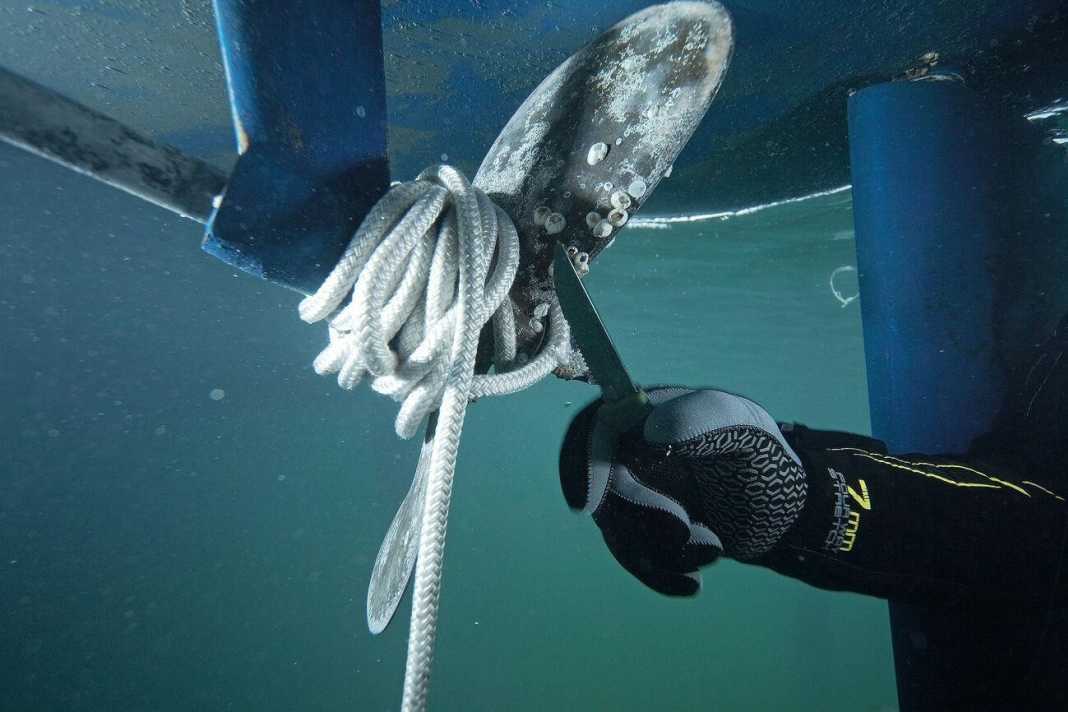





The long-awaited week's charter holiday in the sun quickly turns into a nuisance when minor defects on the boat interfere with everyday life on board. No more running water, the engine gets too hot too quickly, the anchor windlass doesn't make a sound? The logical consequence is to call the charter company, wait for a mechanic and have the damage repaired. But this usually takes at least a day; the trip planning for this short time is ruined. Wolfgang Stuis, who runs a berth charter company, is also familiar with the process and the associated annoyance on all sides.
For one thing, you often have to wait a day or more for mechanics and spare parts out on the water, and everyone on board is annoyed. But above all, a successful repair makes you a better skipper. You learn something about the boat, your fellow passengers are happy and appreciate you more, and you may have averted even greater consequential damage!" - Wolfgang Stuis, Stuis-Törns
Up to seven yachts with guests are under Stuis' care throughout the season. Which is inevitable: There is hardly any damage or repair imaginable that Stuis, as a handyman, has not already done himself. In the meantime, he offers on his boats in Croatia Courses in which skippers can try out more possible damage, including repairs, than they will ever get to know in a normal charter life. The tips can therefore also be useful for owners.
How the most common boat breakdowns occur - and how they can usually be rectified within minutes
1st windlass
Problem: The motor does not work. Or the chain jumps out of the nut or the motor turns without the chain being picked up.
Solution: First check the basics: Is the fuse on the panel for the winch switched on? The diesel should be running, some winches only work if this is the case. Second round: Has the fuse for the winch blown? It has its own battery, which is specially fused, usually in the forward cabin under the bunk boards or in lockers, but sometimes also further aft. It trips when overloaded due to jammed anchors.
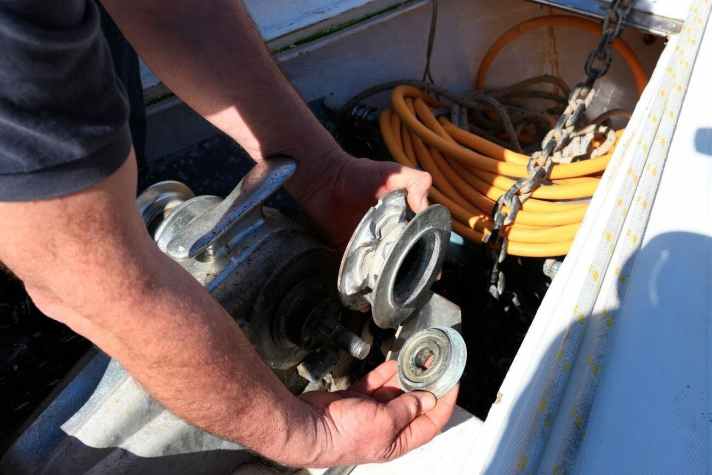
Defects in the remote controls are also very common: The contacts of the plug corrode away, or the cable breaks because crews jam the cable in the anchor locker cover. If the winch is stationary, remove the plug, check the contacts and spray with contact spray. If this does not help, there may also be water damage in the controls - many crews insert them into the holder in the anchor locker upside down (with the cable pointing upwards). If this happens frequently, water can penetrate, causing corrosion and short circuits. Open the controls and dry them out if necessary.
If the winch slips, it is usually only the capstan brake for manual operation that is not properly tightened. If the chain does not run out cleanly when the brake lever is opened, the running surfaces of the brake are dirty. Then dismantle, clean and lubricate.
2. logger hangs
Problem: A classic problem on charter boats in the Mediterranean - the impeller of the log is stuck due to barnacles or algae, runs only sporadically or far too slowly.
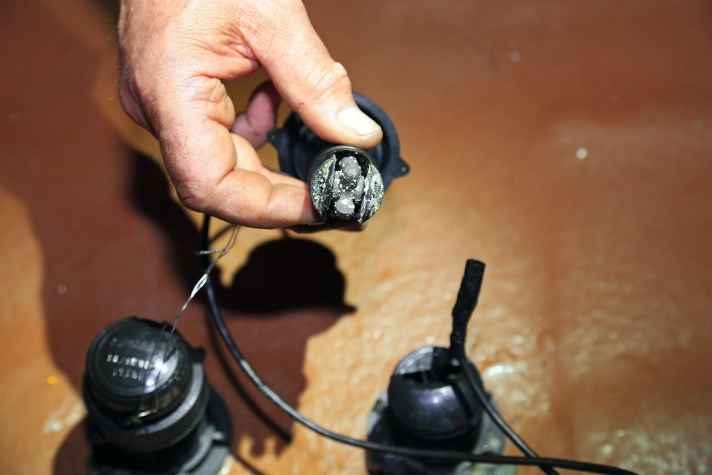
Solution: There should be a plug or screw cap hanging directly next to the transducer on a strap or chain. Don't worry about water ingress: the transducer tubes now have plastic lips on the top to prevent excessive ingress - more than two or three litres of seawater will hardly ever gush in. Tip from Wolfgang Stuis: If the encoder allows it, it is often enough to turn it 180 degrees for a few minutes. Sometimes the vegetation then falls off by itself.
3. lick the hatches
Problem: If seawater comes over the deck or it rains, hatches leak and the upholstery or even the fittings get wet. Upholstery soaked with salt water dries poorly; it must be rinsed thoroughly with fresh water.
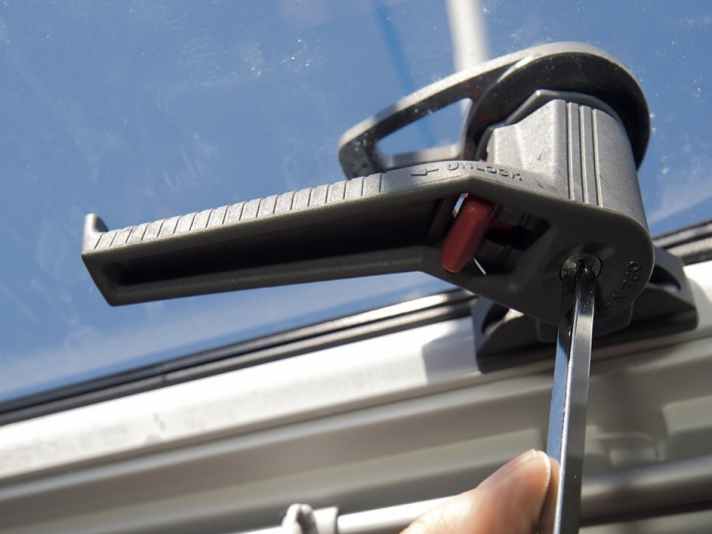
Solution: In the case of inexperienced passengers, make sure that they always close all windows on board properly before casting off and do not leave them in the ventilator position. If available, tighten the mushroom vent in hatches with the pin in the centre! Watch out for jammed lines! If this is the case and a crew member steps on the window, frames may warp or panes may break! Leaks can also be caused by tiny particles of dirt on the seals, which act like capillaries and create tiny rivulets. Clean thoroughly, if necessary cover with fabric tape. Sometimes the levers are just a little loose, they can be tightened using the screw in the centre, not too tight, otherwise the Plexiglas can crack! If none of this helps, the only option is to tap the window shut from the outside.
4. gas hangs
Problem: It is no longer possible to engage or disengage a gear. Or the neutral button on the gear lever is stuck.
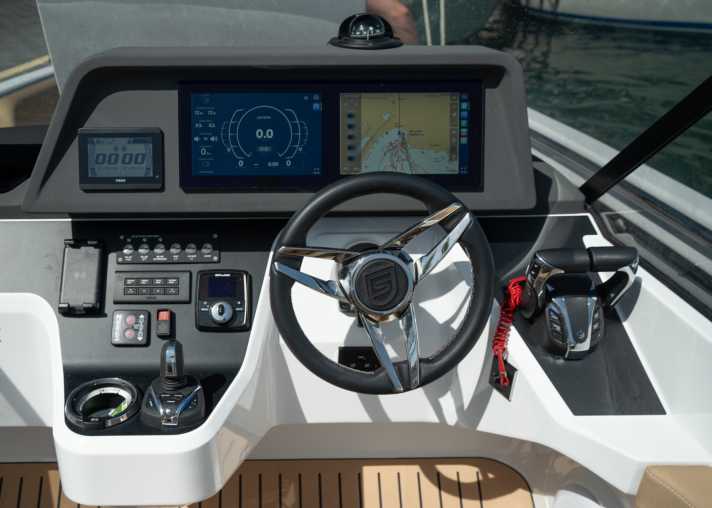
Solution: The smaller problem is the sluggish idling. It can usually be quickly remedied by removing the lever and applying WD 40 or another lubricant at this point. If, on the other hand, the shift cable is sticking, it is usually broken. Experience shows that this often happens just behind the gearstick. Owners should always have a shift and throttle cable on board. If this is missing on charter yachts, which is likely, the only solution is for a passenger to shift gears by hand directly at the gearbox. This is easier than you might think, it requires almost no force, only access to the gearbox has to be sought.
For operation, the blocked cable must first be unhooked, which is quite simple after loosening a screw. Caution is only required because of hot engine parts; the gear lever does not get very warm. With a crew member shifting down to announcement, you can easily motor into the next harbour.
Proceed in a similar way with a defective throttle cable (near the injection pump): unhook and operate by hand.
5. toilet blocked
Problem: A frequent nuisance - smelly liquid keeps running back into the toilet, despite flushing for a long time. Or it is not being pumped out or the pump on board is blocked. It is also possible that the water level drops with every pumping surge and then rises again.
Solution: On-board valves have often been closed by passengers, so first check whether the valves for sucking in fresh water and extracting waste water are open. Then check whether there is a faeces tank and whether it is closed or full. If this has been clarified and flushing water is coming out without anything draining, the pump is OK but the drain is blocked.
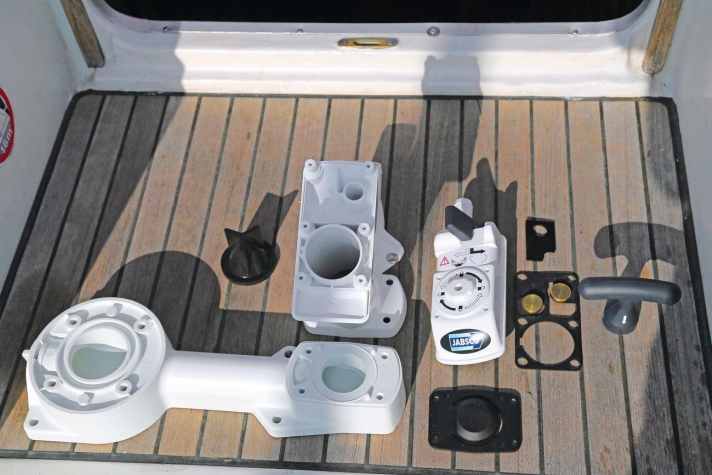
The problem is often found directly behind the pump in the elbow that leads to the waste water hose. A so-called diaphragm outlet valve made of rubber is located there. It closes like a bag and has three slits through which the faeces must pass. If toilet paper, dental floss or the like gets stuck there (none of this belongs in the toilet, but should be disposed of separately in rubbish bins! Solution: Close the sea valves on board. Put on rubber gloves and have a bowl and cloth ready. Then unscrew the elbow from the toilet. Remove the rubber valve and clean it. Its three slots should then close as tightly as possible. If the valve is too old (it should be replaced annually), it may be brittle or blocked by urinary stone deposits. Remove deposits. Such sealing kits are available in almost all marina shops for 20 to 30 euros.
The valve is also the cause of two other problems: if, despite a lot of pumping, yellow sludge keeps running into the toilet, the cause is the slightly open, brittle diaphragm valve. On charter boats, there is sometimes a set of these seals for the toilet in the spare parts! If the water level rises and falls with the pumping in the bowl, the valve has become inverted because a passenger has pumped heavily despite the waste water valve being closed. Then it just needs to be put back into its old position.
If this does not solve the problem, there may be a blockage in the base seal of the toilet. A weighted rubber flutter valve is located there. Removing, cleaning or replacing is the solution here too. The toilet pipes become clogged with urinary calculus and can lose two to three millimetres in diameter per year. The only thing that can help is a lot of flushing and regular replacement of the pipes.
6. water does not run
Problem: No water comes out of the taps - or the water pump is working but does not switch off.
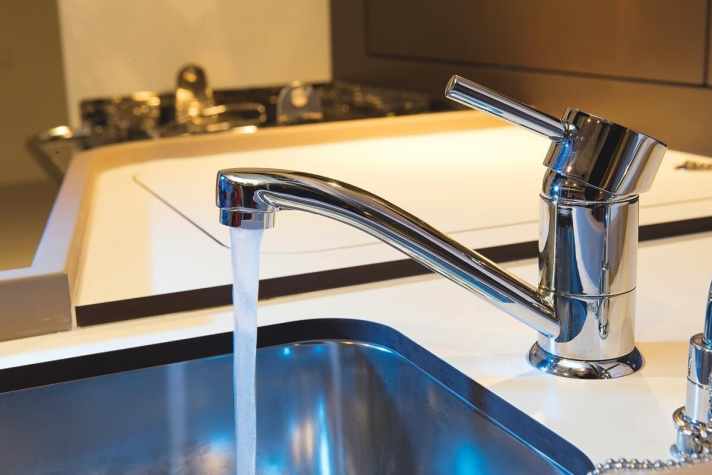
Solution: The first check is for the tanks. Is one tank empty and you need to switch to the second one? To do this, switch off the pump, change the tank, then open a tap wide and let it run until there is no more air. If the tank is already relatively empty, it can quickly draw air.
If the pump does not switch off or keeps switching on without anyone using water, check all end taps and outdoor showers to see if they are defective and running or dripping heavily. If this is not the case, the water filter may not be properly sealed and is drawing air or is blocked. If this is also not the case, check the tank pipes for leaks. Holes can be repaired with self-vulcanising tape. Sometimes the pressure sensor is also defective, in which case the only thing that helps is to switch the pump on and off before and after each use.
7. water in the diesel
Problem: The worst-case scenario - a crew member fills the diesel tank with water. Or when refuelling, as occasionally happens from old tanker trucks in Greece or the Caribbean, contaminated diesel is stashed.
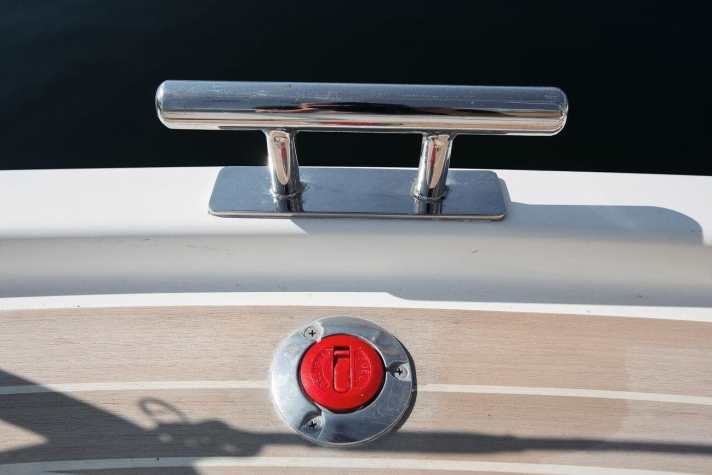
Solution: The most important prevention: keep an eye on the fuelling! But if it does happen: As long as the engine has not yet been started, the remedy can be simple. Water quickly sinks to the lowest point in the diesel tank and separates exactly from the fuel. It is often possible to siphon off the water with a hand pump via the intake port. With a bit of luck, you can borrow such a pump in the harbour from the boat service or an owner. Lay the hose with a wire as a guide to the deepest point and then pump it out. Use transparent water bottles to check when only pure diesel is left.
Important: Do not start the engine beforehand! Although it has a water separator, it is not designed for large quantities! If it is started, serious engine damage is possible! Charter skippers should refrain from such actions and contact the base immediately!
8. propeller catches line
Problem: When mooring, the skipper catches a mooring line, or remnants of nets, fishing lines or plastic sheeting get caught in the propeller.
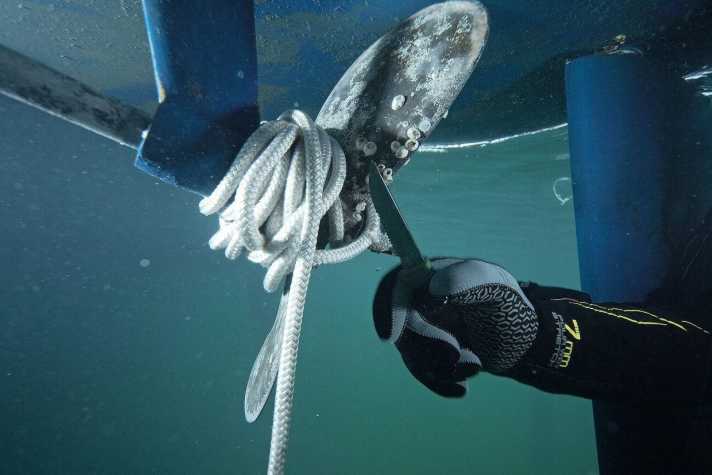
Solution: If the line or foreign object is thick and tight enough, it will block the propeller completely, causing the engine to stall. Alternatively, a rough beating of the propeller may signal trouble. In this case, disengage the clutch immediately; this will prevent the foreign object from literally melting onto the shaft or damaging the propeller.
A dive provides clarity. Serrated knives are suitable for cutting free. Important: Thin fishing line on a saildrive is treacherous; it can work its way through the two oil seals towards the gearbox. The transmission oil then leaks out, resulting in serious engine damage. Therefore, remove fishing line as residue-free as possible.
A slight trace of oil in the stern water of the engine is an indication of this dangerous damage. If the engine has been stalled, the fixed-pitch propeller may slip on the shaft after it has been cut free, as it has glued-in bushes that come loose when it is blocked. The propeller will then slip on the shaft when you accelerate. Also important: After cutting free, briefly check whether the safety pin of the prop is still in place. Sometimes it tears or loosens - then there is a risk of losing the propeller when reversing.

